Christiania Bikes is a business with a very distinguished IRL history. Based in Denmark, this manufacturer has produced bicycle trailers since 1978 and cargo bikes since 1984. Despite huge growth, the basic product and manufacturing process has largely remained unchanged to this day. The company is still owned by the founders – Lars Engstrøm and Annie Lerche. I had the pleasure of talking to the next generation of Christiania Bikes – their son – Hans Lerche Engstrøm. He is looking to develop the business via eCommerce and was excited to talk me through how such a well established product is now using WooCommerce to reach a broader audience.
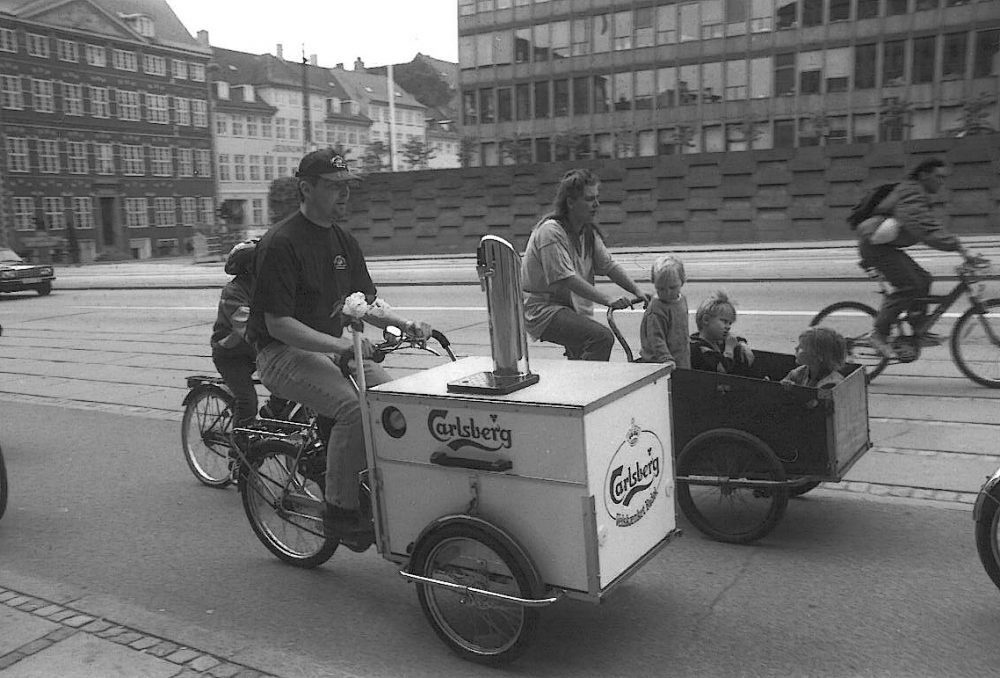
Hans’ enthusiasm about the business was palpable during our Zoom call; which took place while he was walking on the streets of Copenhagen. Whenever a cargo bike went past Hans whipped the camera round to give me a view of the product in action! The bikes are used by a huge range of people – they are appreciated as mean cargo machines as well as being seen as a cool fashion item. In Copenhagen you can see a well-dressed mum wearing high heels move her children around in a shiny new cargo bike, and on the next block someone moving recyclables, tools, furniture, or books in a decades-old one.
In fact Small Woorld was put in touch with Hans by our friend Manos Psychogyiopoulos, who used a Christiania cargo bike in his student days to carry beer cans and recyclables to the nearest supermarket to exchange for coupons! Ten years later Manos was delighted to learn that the company now uses his tool for creating product configurators – Composite Products. It was a happy realisation that led to this interview. 🙂
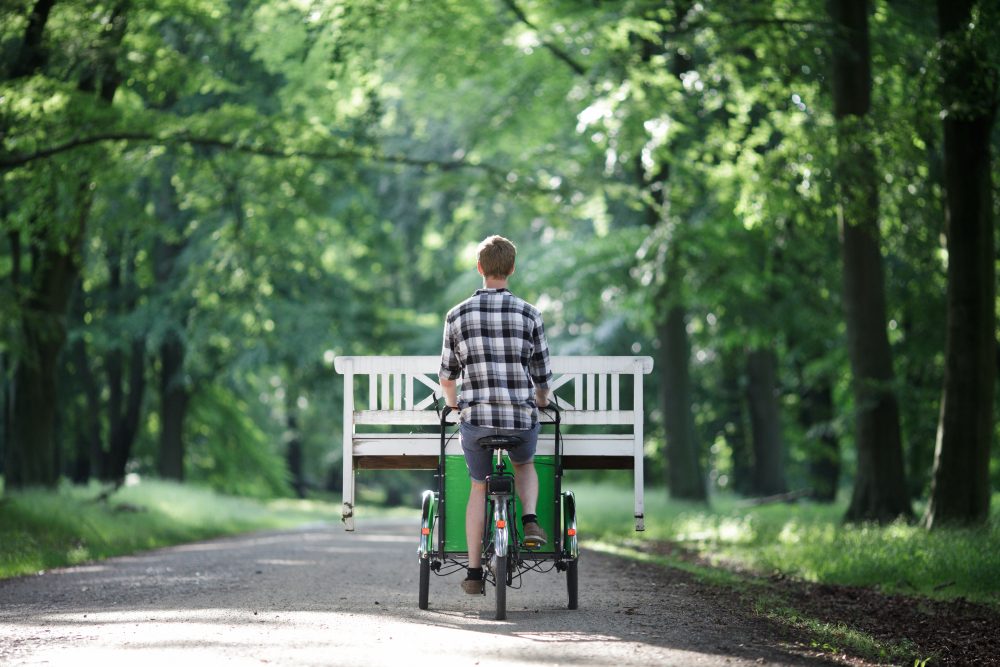
Carolyn: I believe that Christiania Bikes first began in a dockland area in Copenhagen?
Hans: Yeah, in the old days, it was a military area, where there were a lot of barracks for the army. And then, after the war it was just left abandoned. Some young people thought, why not take it and live there? And that’s what they did. And then they named it Christiania. My father, he was one of the guys who started the community, and he began the blacksmith [shop], named Christiania Blacksmith. He founded it with three other guys, and they started making ovens because they didn’t have any heat, so they needed some way to warm up their houses and so on. And after that, they began to make trailers because, in Christiania, you’re not allowed to move by car, it’s a car free area. So there was a need for a new kind of transportation. That is why they started making trailers to transport barrels for stoves and other materials.
Bike spotting interlude…
Hans: See, over here. There’s one biking over here! Do you see it? Over the other side.
Carolyn: I see it. Oh, fantastic. It’s so good.
Hans: And one with a mother and children as well!
Carolyn: Oh yeah. Wow you can really get a lot of kids in there.
Hans: Yeah. So now there’s a whole hoard of bikes coming. Over there, on the other side!
Carolyn: It’s great to see then in action!
Hans: Yeah, yeah. I just wanted to show you!
Carolyn: Thank you! It’s great to see them! So, I read that the first version of these bikes was a gift to your mother back in 1984?
Hans: Yeah, that’s true. And we have a picture of it, the first bike. It’s an image of my sisters and my mother driving the bike. It’s a very iconic image. The first bike was a present from my dad to my mother on her birthday. My mother thought she was being given a road bike, because she had always wanted a road bike. So, when it was her birthday she was very excited that there was a big present wrapped in paper and with a red bow. And then she unwrapped it and it was a cargo bike. And at first she was very disappointed!
Carolyn: Oh no!
Hans: Yeah, because she thought it was a road bike. But in a matter of seconds, she was on the road, in the areas of Christiania, driving around with my two elder sisters. And then after five minutes one of our friends said, build me one like this. And then it started. So that’s the story.
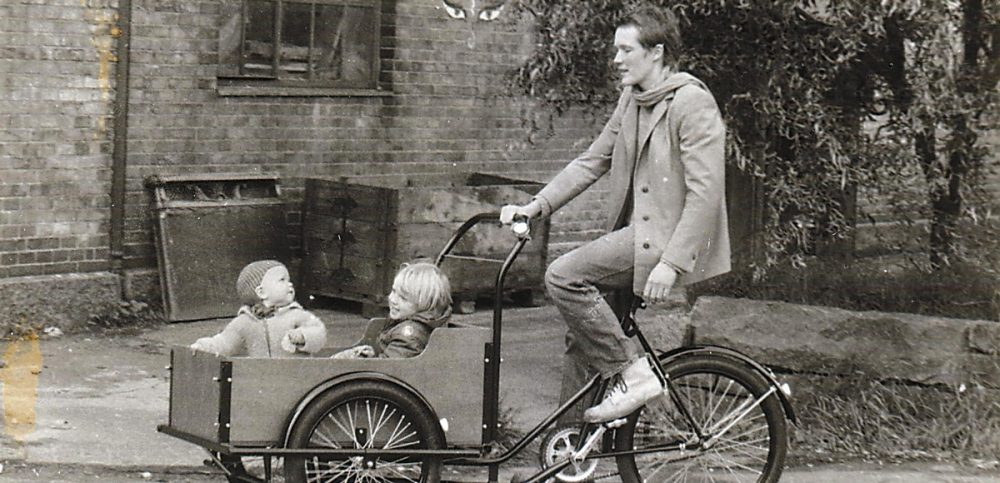
Carolyn: So, what made your dad decide to put the trailer on the front of the bike? That must have been a pretty new idea?
Hans: Yeah it was a new idea. We didn’t have a nice means of transportation for carrying children. We started to transport the children in the trailers – but from our perspective it was a little bit dangerous because you could not see them. So because of that, Lars, my father, he thought, why not put the trailer in front of you? And then he made this box in front of the bike where you could transport the children.
Carolyn: Great idea. And did people come on board with the idea quite quickly?
Hans: Yeah, within Christiania they did, like I said, after five minutes we had the second order. But that was only in Christiania, because in Christiania, you could not have cars. So, everybody wanted a cargo bike. But outside of Christiania, it was not very popular. In other places, people are used to getting around by car. So they found it weird to see somebody driving around with children in front of them in a big box. It took years before it became more common.
But we did have some very enthusiastic people who just said, Wow! This is a good idea. So, we had contacts in Germany, in the UK and so on. But it was not because we sold a lot of bikes immediately – it was just that some people could see that the idea could be a really good thing for big cities, as a good replacement for the car. It took a long time to get more people to get the idea. Cargo bikes are a common part of everyday life here in Copenhagen, but if you go to the other places in Europe, for example Germany or the UK, you will see they only just started this way of transporting people.
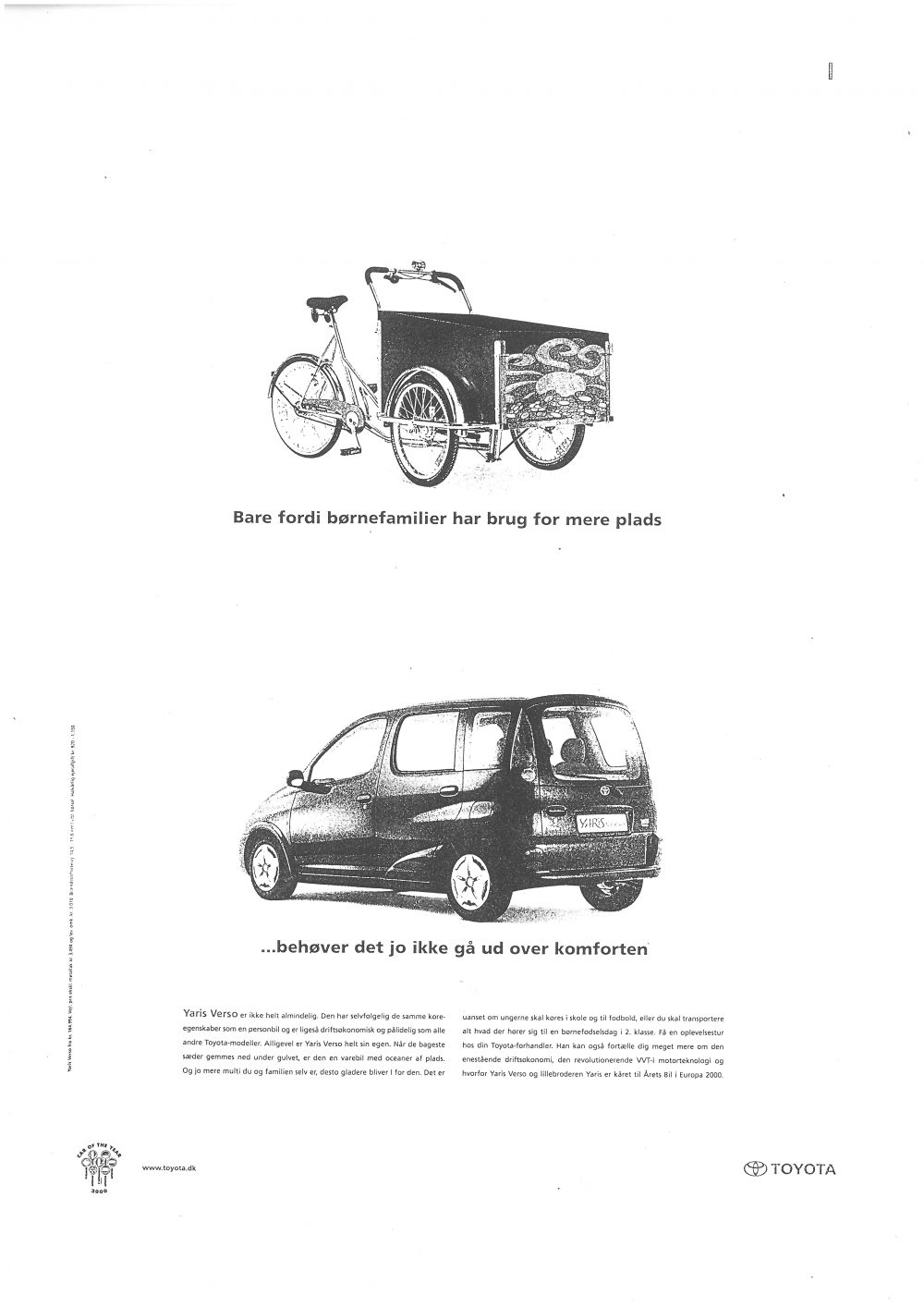 Carolyn: You moved your production to the island of Bornholm quite early. That wasn’t because of growth then?
Carolyn: You moved your production to the island of Bornholm quite early. That wasn’t because of growth then?
Hans: We moved to Bornholm in the beginning of the 1990s. It’s a small island, off the coast of Denmark. It’s weird to move production to a small island – because you need a lot of materials to get to the island and then you need to produce all your products and ship the products out on the sea to the mainland again. But I think one of the reasons we moved was for lifestyle, we didn’t see the bikes as a big business initially. We saw it more as a hobby. My parents said, Okay, we’ll give it a chance, we’ll move to Bornholm. My sisters and I, we liked the place and so on, and my parents did as well. A lot of people from Christiania have also moved to Bornholm. The bikes were just a hobby – so why not just move to a place where we can have a nice time?
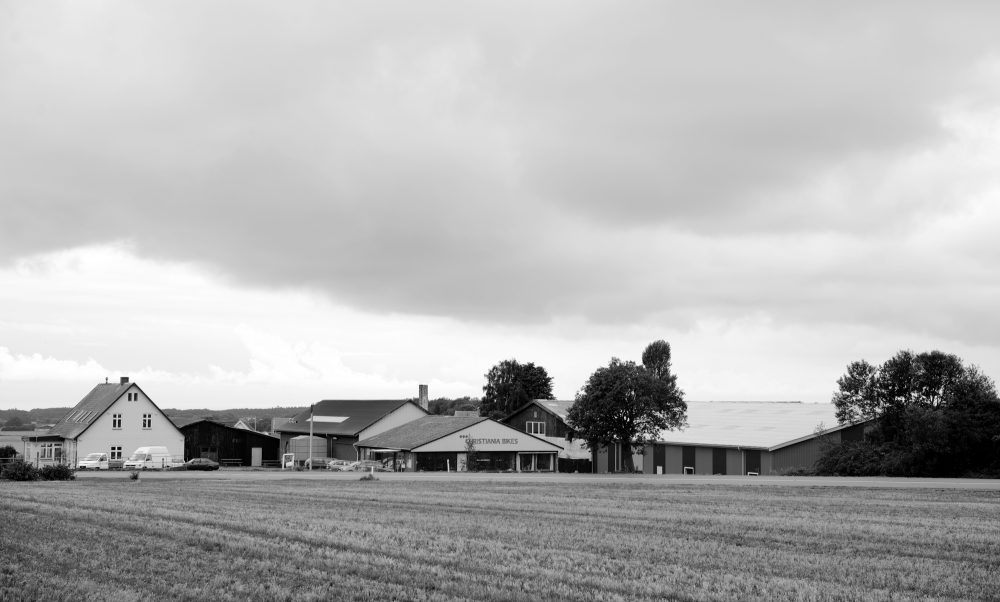
Carolyn: And I read that you guys got local farmers to help you?
Hans: Yeah – It’s a good story! When we moved to Bornholm, we moved to a place which was very conservative in many ways. For them it was strange to see people from Copenhagen moving to an old farm house, building bikes. Right? It doesn’t make sense. So for them, it was really crazy and we were not seen with good eyes. It was like- you are strange people moving to this island trying to make bikes! But, what happened was that some of the farmers needed more work, and we needed more labour. So, our neighbour, he started making wheels. And then our other neighbour, he started joining him. One guy was a small farmer and the other one was a big farmer. They both started making wheels and had a small wheel production.
Carolyn: Great!
Hans: And then it continued. We needed someone who could sew and make our hoods. Suddenly, we had another farmer who started making hoods. Actually, some part of this is still going on today. The farmers who started sewing the hoods are still doing it today. And our neighbour, who has been making wheels, he is still part of the production today, together with his son. We took over the neighbourhood. And today we are a great success on Bornholm. A very positive story.

Carolyn: Absolutely. When did interest from other countries in Europe first start? You started off in this tiny community and then I guess it would be Copenhagen, that was a big market for you?
Hans: Yeah, Copenhagen was our biggest market. But then we had interest from Berlin in the beginning of 1993 or 4 or something and they started to sell our bikes. Not in a big quantity but just in a small quantity. And the same happened in the UK, where we still have the same distributor, he was just an enthusiastic cyclist who started as a distributor. Now we sell worldwide. But many of those who have started with us from the beginning are still part of us today – and they are also good friends. It has actually not been not so much about business as it has been about working with friends who have a common interest, which is, selling these cargo bikes.
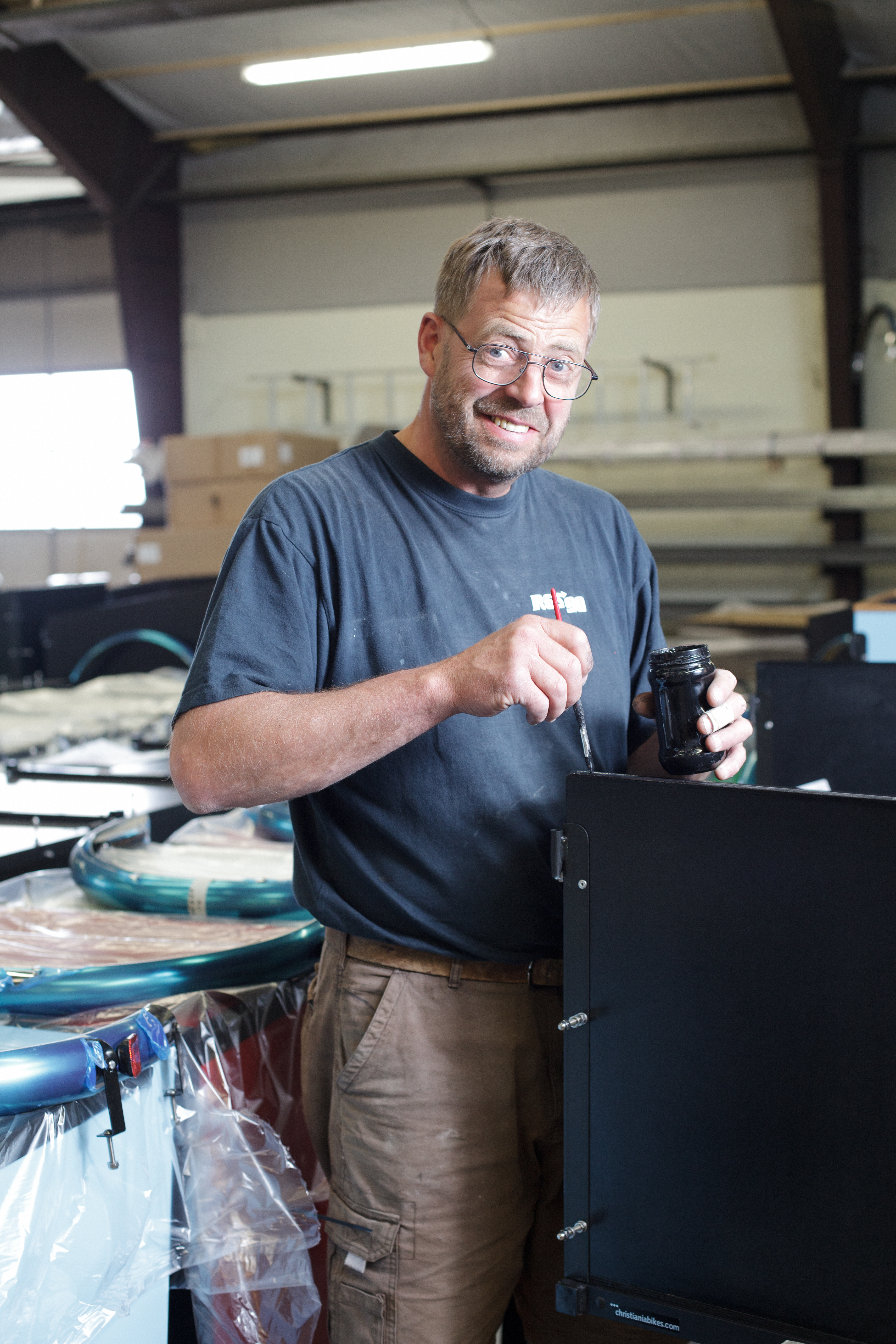
Carolyn: In what countries are the bikes the most popular now?
Hans: Copenhagen and Berlin. We sell a lot to Germany and in Sweden. And we sell a lot to the UK, France, Italy, Norway. And then we did have a distributor in the US, but we’ve stopped there for the moment – it is a harder market to break away from cars!
Carolyn: I just wanted to just touch on the fact that these bikes are so helpful with reducing congestion in cities. I saw that Copenhagen Municipality, last year, tripled the number of special parking spaces for cargo bikes – even taking away parking spaces for cars. Do you think that the cargo bike could ever take over cars completely in Copenhagen? Is that what you’d like to see?
Hans: Yes. That is of course what I would like to see. And I think the use of bikes will increase, not only here in Copenhagen, but all over the world. I think especially because we there’s a higher interest in electric cargo bikes. That has been a major step for many, because some find it heavy to ride and to transport children. So, the electric assist has been a huge step towards a higher awareness of cargo bikes and making cargo bikes much more powerful and a better alternative to cars.
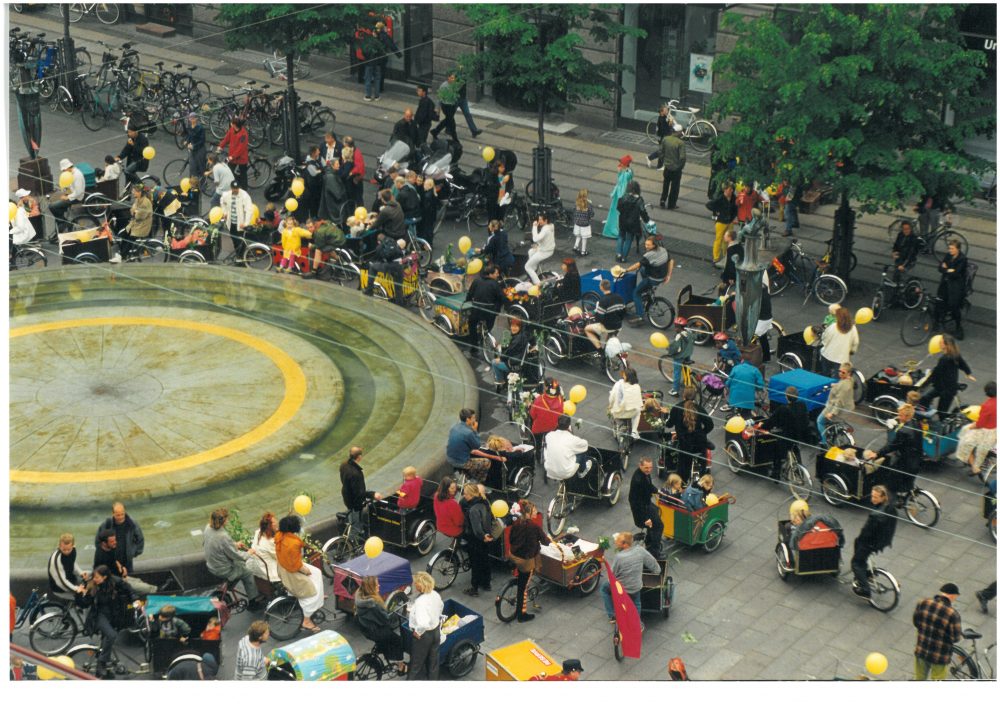
Carolyn: So, I’m curious about the actual bikes. How many different models do you now have?
Hans: We have four classic models which are specifically made for children. Then we have a medium size, a large one, and a fast one. And then we have four classic models for business and two special models. We have a rickshaw, where you drive in front, and a special trike for people with special needs, who need a wheelchair. And then we still have the trailers.
Carolyn: Which is the most popular model?
Hans: The classics for children. We sell a lot of those. We have also seen an increase in what we call model T. Which is our rickshaw. And that has been because there has been a huge movement to get elders outside from old people homes. So they go out – sit in the front on the rickshaw, and drive around the city to see their old neighbourhoods and where they used to hang out and so on.
Carolyn: I read that you received the Danish Classic prize from the Danish Design Centre – which is given to outstanding Danish products which have remained almost unchanged for 25 years. So you’ve obviously still kept a very traditional design. Is it hard to keep that relevant?
Hans: We haven’t made many changes. It’s just the same. You can fit a new hood on a bike from the beginning of the 1990s. So, dimensions are the same. We have of course improved parts on the bike. You know, brakes have been improved and other equipment has been improved, other types of gearing, speed systems and so on. But the design, the overall design is the same.
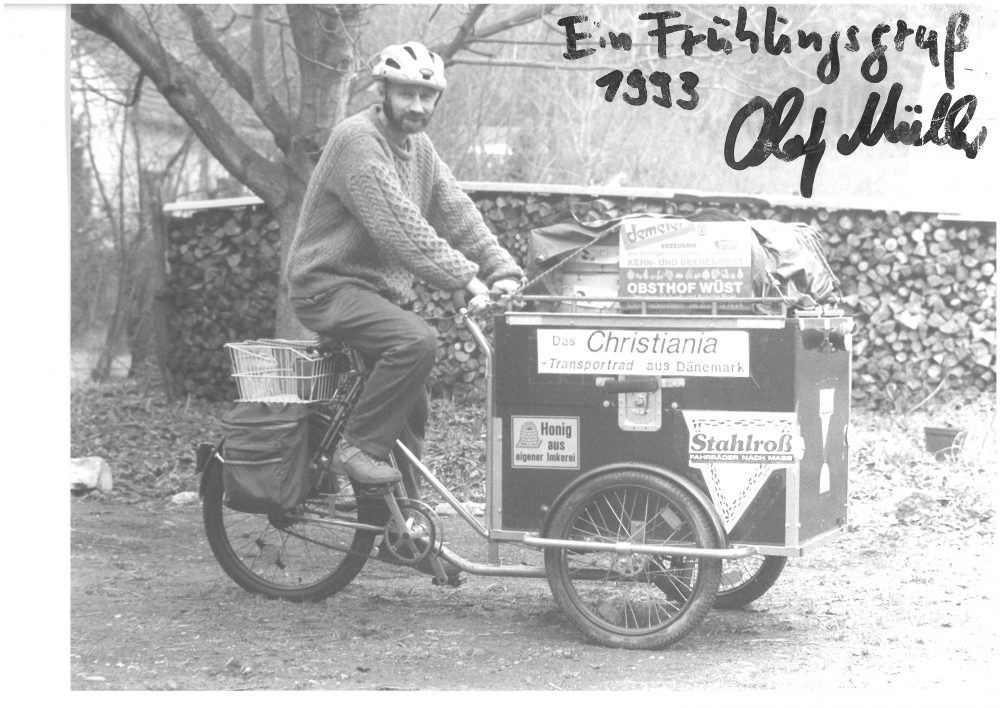
Carolyn: That’s awesome. And do you still get your materials from the same place or have you got new sources?
Hans: Some of the materials are still from the same places. For example, the handlebar is made in Denmark from the same supplier. And the wheels? We make most of the wheels ourselves. We also make the rear frame ourselves – if it’s made in steel, we make it by ourselves! The wood is not from the same place simply because we buy such a high quantity that we needed a new supplier.
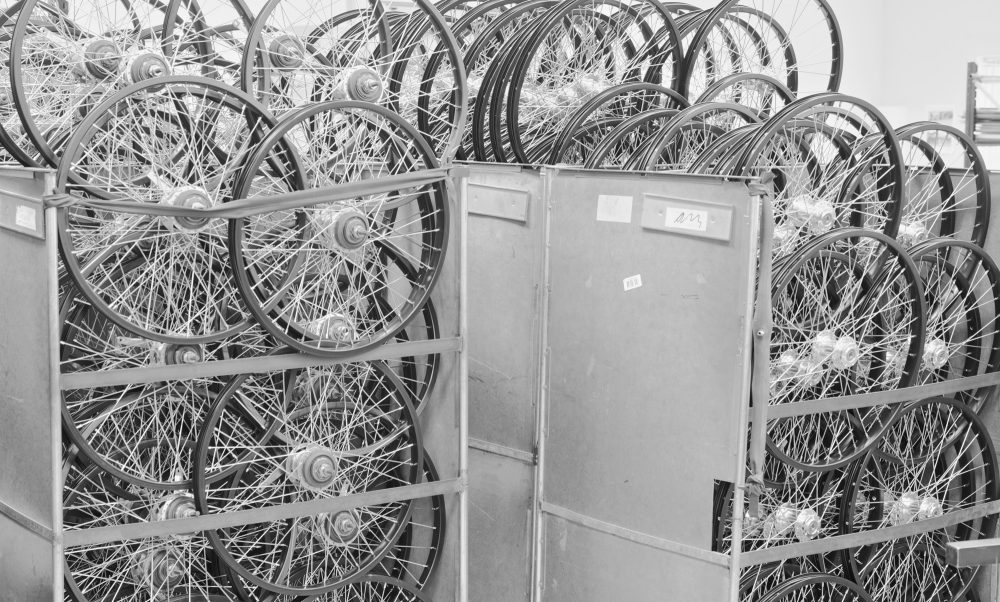
Carolyn: You guys are steeped in history, but you’ve now moved your business online as well. What made you decide to make the step into the world of eCommerce?
Hans: It started actually … What is it, five? Six? Years ago. It was because I was doing my thesis, my bachelors degree, and I wrote my thesis about B2B eCommerce. When I finished it I left it for perhaps half a year or something. And then when I was starting my masters degree I just thought, why not just look at this B2B eCommerce? And that’s what I did. So, that’s actually where it came from – it was because of my study. And then it became a hobby because I thought it was interesting.
Carolyn: Has it changed the way you work with your dealers?
Hans: Definitely. Our dealers think it’s an amazing service – they can order bikes online whenever they want and they can see prices whenever they want. They don’t have to send an email and wait for an answer from us. Whenever they have made an order, they can also see how far it is in the production – they get updates. So there are a lot of benefits.
Carolyn: Have you ever thought about selling directly to retail customers via your own website?
Hans: Yeah, we have thought about it, but it’s not something we want to do right now. I tested it, where you can buy one of our models on our webpage and then, when you went to check out, you could select the dealer who should manage the order. So we are thinking about doing it that way – you can order it online at our website, but then you have to select the dealer who should take care of it.
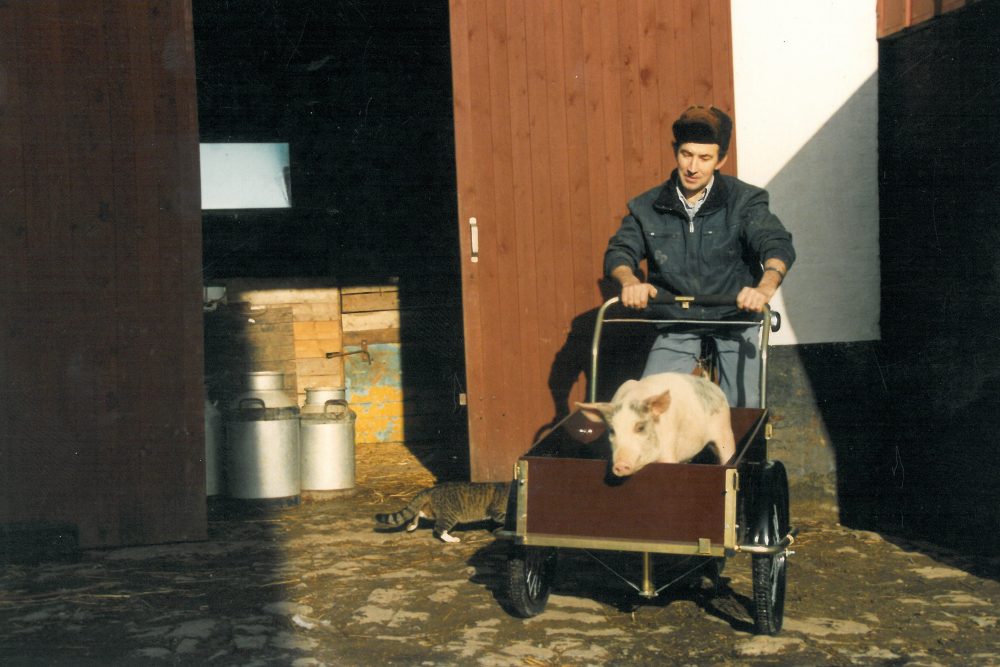
I think when we talk about eCommerce, there’s this line, about how well a product works being sold in this way. For something like books it is simple, but if it’s a bike or a trike, you want to have a test ride, and it’s also a very big product. So, there’s a lot of shipping costs which plays a huge part. With something like shoes, you can buy them online and if they don’t fit, you can just send them back. If it’s a bike like this, which is shipped on a pallet, that’s a lot of shipping costs. And there’s another consideration, and that is that our products can be customised in so many ways. So if a customer buys a certain product online and customises it – it would be very complicated for us to take it back. So with our product we have complications with selling directly to end users. This local way of doing it, where you have some local dealers who handle everything, that is probably the way to do it, at least for our product.
Carolyn: That makes sense. Obviously you’re already very well known locally. Has using eCommerce helped you reach a broader audience?
Hans: Yeah, definitely. Because it’s easier for us to set up a customer account with new dealers. Before, we were so busy we did not always have time to set up new customers. Now it’s much easier to set up a customer account and say to the customer how he should buy from us and so on. Because, it’s within the eCommerce site.
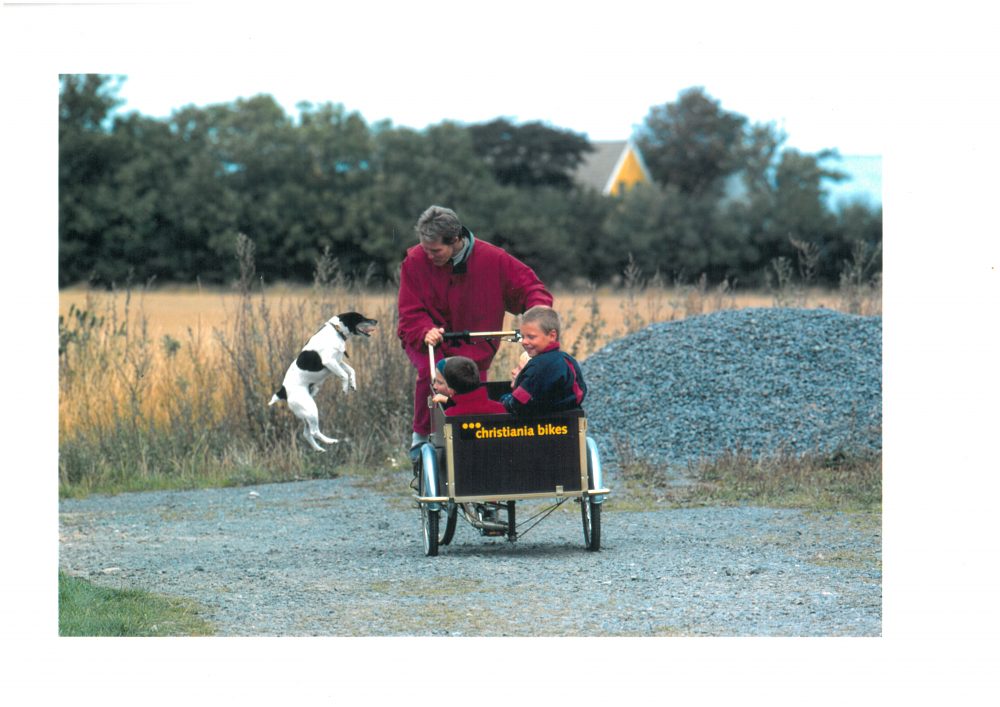 Carolyn: Did you have any teething problems with starting to use eCommerce?
Carolyn: Did you have any teething problems with starting to use eCommerce?
Hans: No, I thought people might not use it but it was just instant! It has reduced the order process down by ten minutes. And that’s a hell of a lot of time in a year. If you have a lot of orders, it’s a lot of time. But the reason why it’s so helpful is because, we have so many combinations and we have to synchronise the eCommerce side with our Enterprise Information Portal (EIP). This is a single gateway to all of our economics and our stock and our customers and suppliers and everything, all of that. And we have to synchronise between the eCommerce shop and the EIP system automatically. And then we needed a plugin that can be very versatile -like the Composite plugin is. So, that’s why I chose that.
Carolyn: Where do you see Christiania bikes going in the future? We talked about the issues of selling directly to the customer. But is that something you feel that you’d like to do, further down the line? Or what other direction would you like to see the company heading in?
Hans: That’s a big question. I think it’s very difficult to talk about what will happen. Simply because we are in an industry which is in a really high development right now. It could be that in five years we are overrun by competitors. Car makers could come in and make some extremely nice cargo bikes. They have more contacts and so on. So, it’s difficult to know, but we will of course do the best we can.
Our plan is to have, as we have always had, a good structure, and to develop our business slowly, so we have control of our products and give a good service to customers. Our plan is not to expand a lot and quickly and so on, because we cannot control that. Expanding too quickly is a huge problem for us because even now we have, in the high seasons, around a three month delivery time. And it’s not good. So, it’s a hard question to answer. But what I’m doing right now, is that I’m trying to structure the production better. We can improve our processes and improve our systems. For example, using eCommerce has improved things a lot.

Carolyn: So, my final question is, do you have any advice for any entrepreneurs who are considering expanding their business online as you have done. Are there any pitfalls to avoid?
Hans: Oh that’s difficult. If I was starting something new, and especially if I was starting something related to eCommerce in any way, I would say go for WordPress. So that’s my recommendation and it’s not a lie. I believe in it a lot and it’s an amazing tool, especially for entrepreneurs – because it’s easy to understand and easy to set up, it doesn’t cost you a lot and so on. So that would be my main recommendation for entrepreneurs who are looking into the eCcommerce section – go with WordPress.
Conclusion
The main office and production facility of Christiania Bikes is still located in the beautiful countryside on the island of Bornholm. However, it has come a long way from just being a hobby run amongst a community of friends. Currently, the production area expands more than 3000 square metres, and more than 26 full-time employees are working at Christiania Bikes including carpenters, blacksmiths, engineers, and bicycle mechanics. Yet the values of the family, and the product itself, remain largely unchanged. The cargo bike has stood the test of time – and with eCommerce Hans is using a new method to distribute a product that has lasted decades – and we are sure will last decades more.
Here is to a car free Copenhagen!

